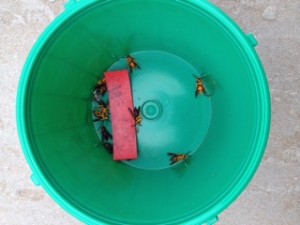Other Moths That May Be in Grape Root Borer Traps
go.ncsu.edu/readext?302082
en Español / em Português
El inglés es el idioma de control de esta página. En la medida en que haya algún conflicto entre la traducción al inglés y la traducción, el inglés prevalece.
Al hacer clic en el enlace de traducción se activa un servicio de traducción gratuito para convertir la página al español. Al igual que con cualquier traducción por Internet, la conversión no es sensible al contexto y puede que no traduzca el texto en su significado original. NC State Extension no garantiza la exactitud del texto traducido. Por favor, tenga en cuenta que algunas aplicaciones y/o servicios pueden no funcionar como se espera cuando se traducen.
Português
Inglês é o idioma de controle desta página. Na medida que haja algum conflito entre o texto original em Inglês e a tradução, o Inglês prevalece.
Ao clicar no link de tradução, um serviço gratuito de tradução será ativado para converter a página para o Português. Como em qualquer tradução pela internet, a conversão não é sensivel ao contexto e pode não ocorrer a tradução para o significado orginal. O serviço de Extensão da Carolina do Norte (NC State Extension) não garante a exatidão do texto traduzido. Por favor, observe que algumas funções ou serviços podem não funcionar como esperado após a tradução.
English
English is the controlling language of this page. To the extent there is any conflict between the English text and the translation, English controls.
Clicking on the translation link activates a free translation service to convert the page to Spanish. As with any Internet translation, the conversion is not context-sensitive and may not translate the text to its original meaning. NC State Extension does not guarantee the accuracy of the translated text. Please note that some applications and/or services may not function as expected when translated.
Collapse ▲A grower who recently started monitoring for grape root borer moths in their vineyard sent me images of moths he’d captured in traps yesterday, wondering what they were.
We typically do not capture grape root borers until July, and the moths in the traps certainly did not appear to be grape root borer moths, which are brown with yellow bands across their abdomen.
The pheromone lures used in grape root borer traps are known to cross-attract moths in the same family (the Sesiidae, or clear wing moths), but the moths captured also did not resemble the other common clearwing moth that can be captured in grape root borer traps, the squash vine borer, which has a mostly black thorax and an orange abdomen.
I was stumped because I could not find any images resembling these moths in my go-to online image databases, so I contacted Matt Bertone in the NCSU Plant Disease and Insect Clinic for assistance. With the assistance of GigaPan images from the NCSU Insect Museum, Matt was able to narrow down the likely candidates to the red oak clear wing moth. In fact, one of the specimens (see the snapshot Zoom) in the Insect Museum was collected by faculty member John Meyer from a grape root borer trap!
We can add the red oak clear wing moth to the other “look-alikes” that may potentially be found in grape root borer traps. Growers monitoring for grape root borer should be prepared to distinguish between these species.
More information
Do it yourself: Grape root borer monitoring – Entomology Portal





